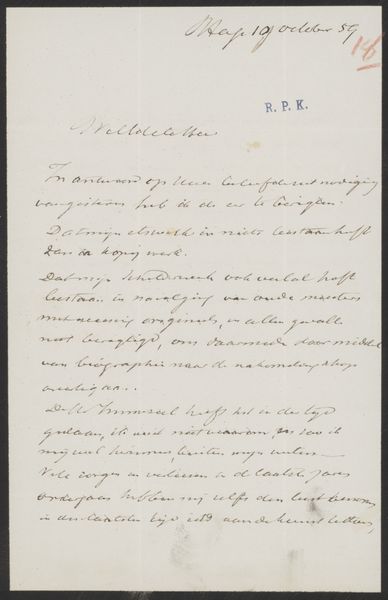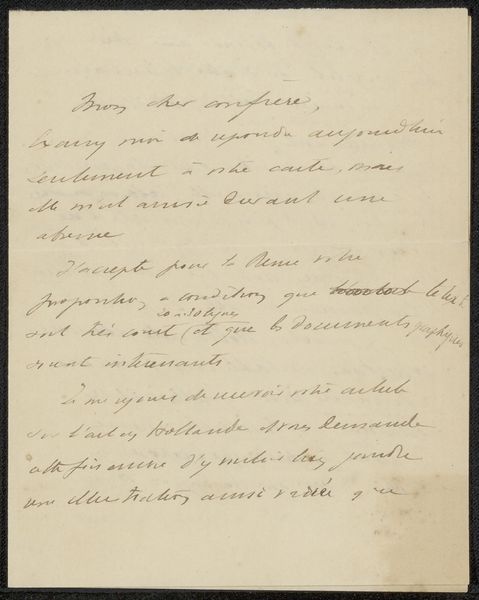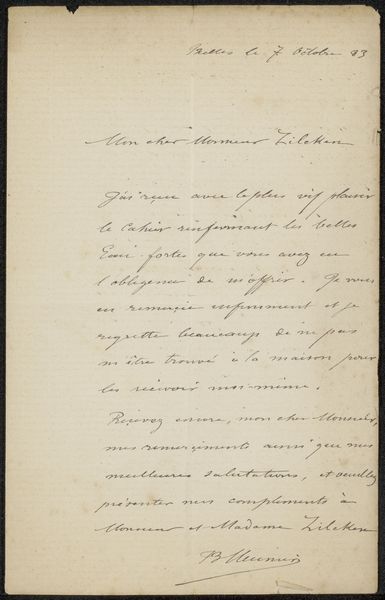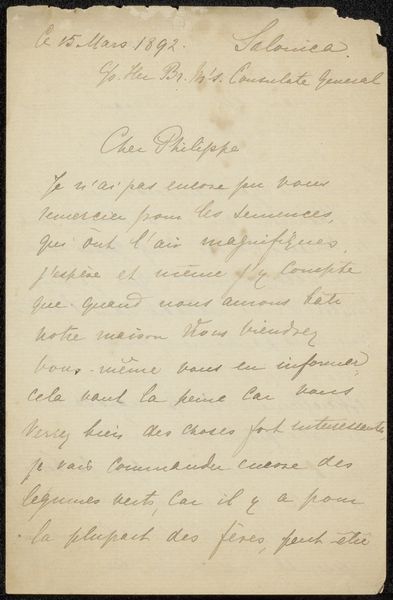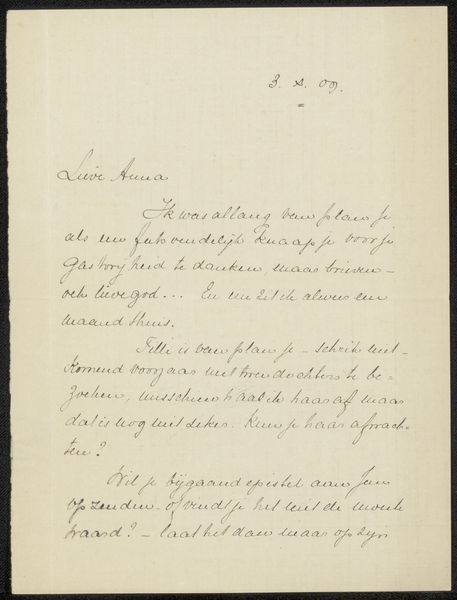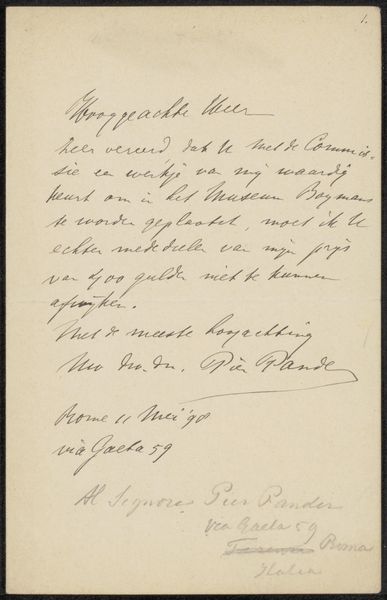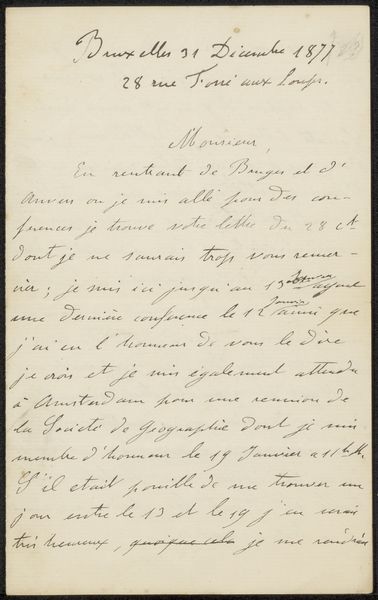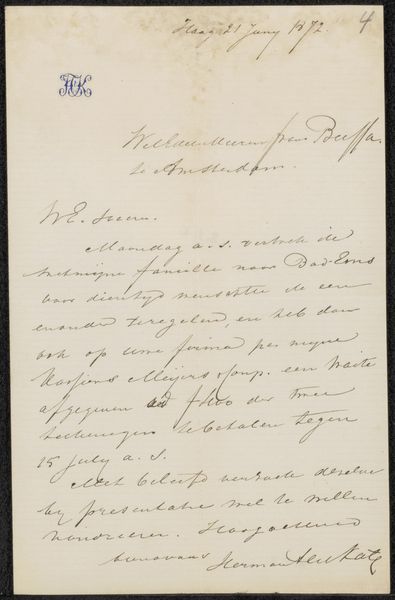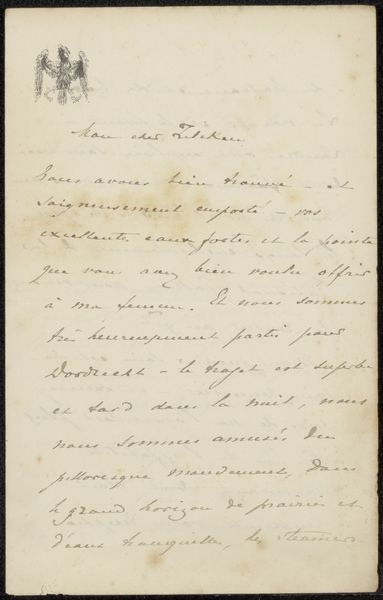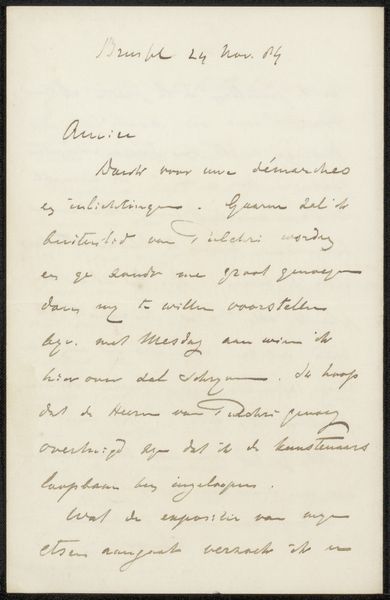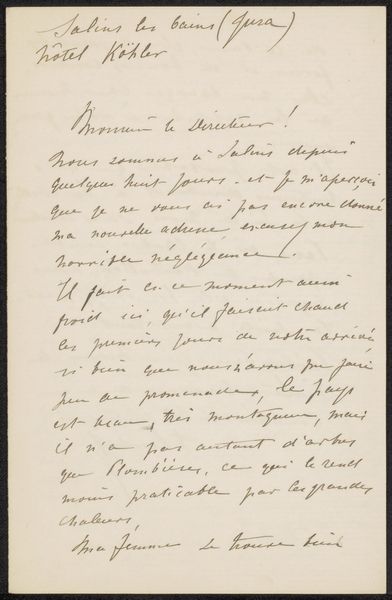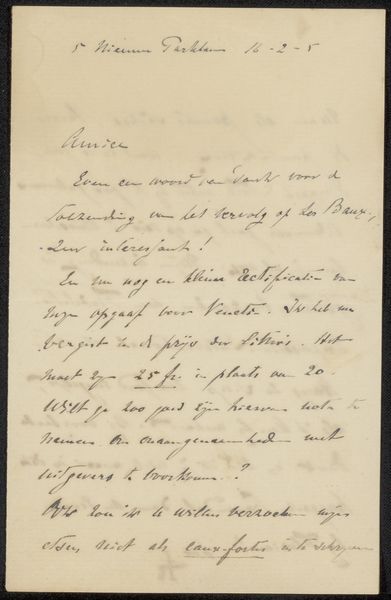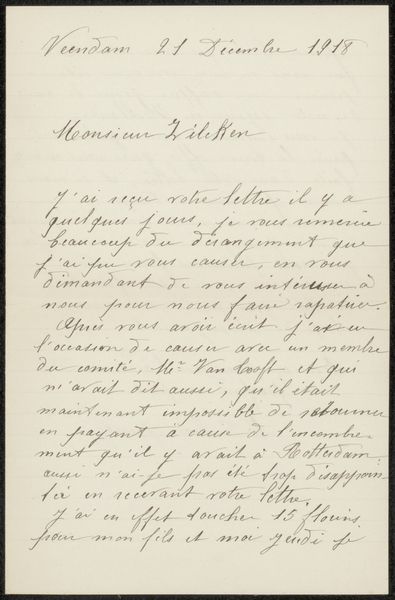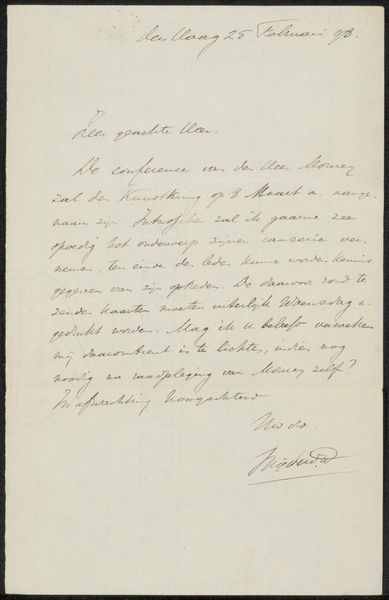
drawing, paper, ink
#
portrait
#
drawing
#
paper
#
ink
#
intimism
#
calligraphic
#
calligraphy
Copyright: Rijks Museum: Open Domain
Curator: Here we have a drawing titled "Brief aan Philip Zilcken" or "Letter to Philip Zilcken," possibly from between 1900 and 1924, created by Mari ten Kate. It's rendered in ink on paper and held here at the Rijksmuseum. It strikes me as being surprisingly modern, despite its age. Editor: Yes, a muted, quiet, intimate feel—that script has its own aesthetic quality. The controlled hand and uniformity feel decidedly intentional. I’m curious about the paper itself. What was the means of production at this time? Was this readily available? Curator: Paper would have been relatively common, although the quality could certainly vary. But look closely at the looping strokes and the controlled line weights—it communicates so much about the sender. I immediately get a feeling of polite formality. This wasn’t a rushed note dashed off on a scrap; it's a carefully constructed message intended to convey respect. There's a visual hierarchy present. Editor: Absolutely, the handwriting is far more than just text—it's a craft. This act of physically writing, using ink—a relatively permanent medium, suggests importance. Also, it says something about literacy, not everyone would be able to engage with something like this. It also seems important that its a portrait of written words themselves. The text’s content and Mari ten Kate’s intentionality here really converge. Curator: Indeed. The drawing exists as a symbol of intimacy but is simultaneously very carefully composed and arranged, which gives off a sense of distance. I feel it speaks to the complex social conventions and modes of address that were present during the late 19th, early 20th century. We read the material message and its symbols from so long ago. Editor: I keep considering the labour that has gone into producing it, from sourcing the materials to hand-crafting each letter, each curl, each connection. Curator: These insights remind us that what may seem like a simple, everyday object—a letter—holds immense historical and cultural significance. The handwriting becomes a portrait in itself. Editor: And underscores that, beneath all artwork lies labour, the transformation of raw materials, the means and method and moments of human application. It redefines art for the better.
Comments
No comments
Be the first to comment and join the conversation on the ultimate creative platform.
